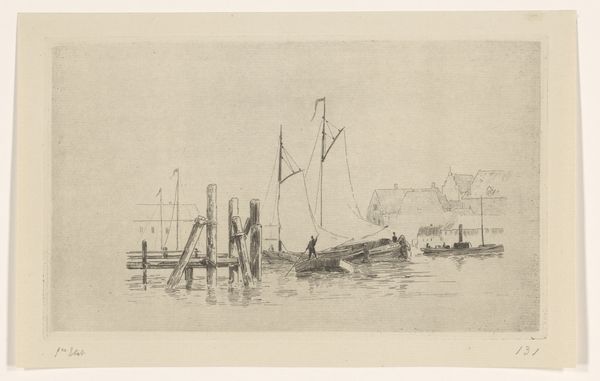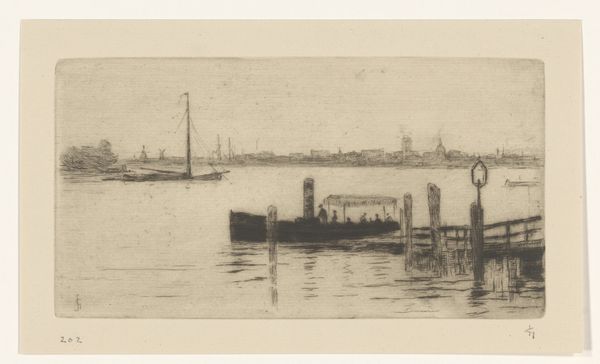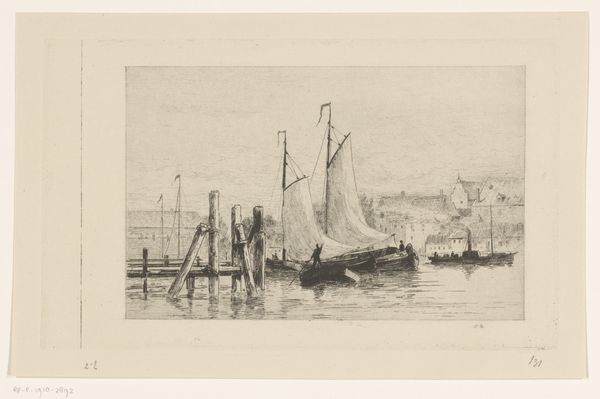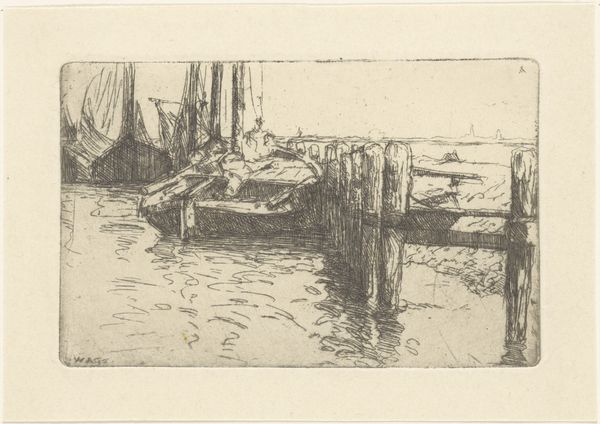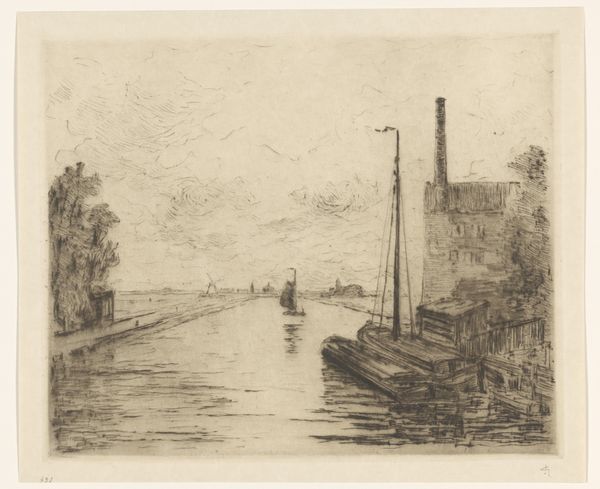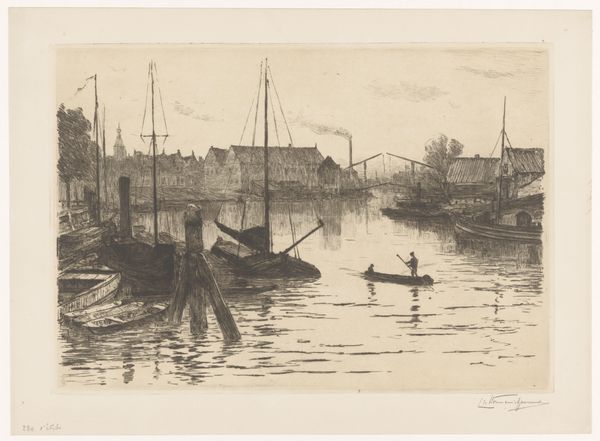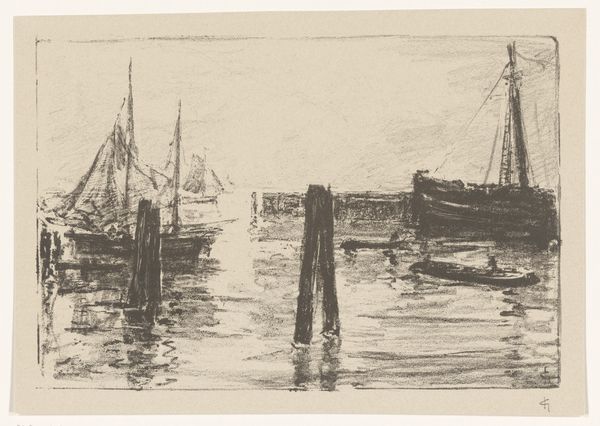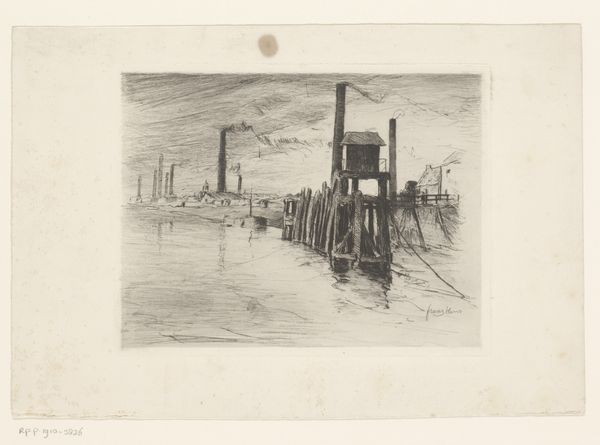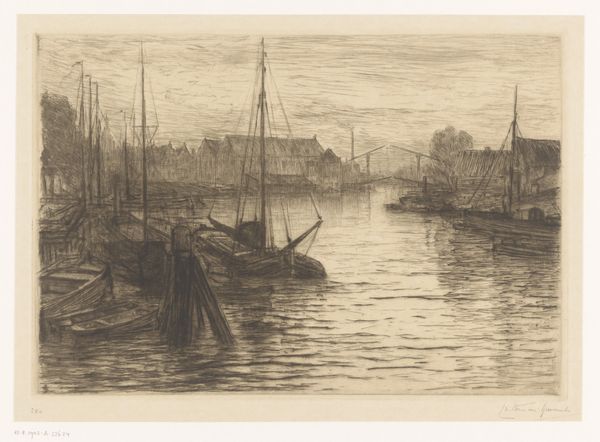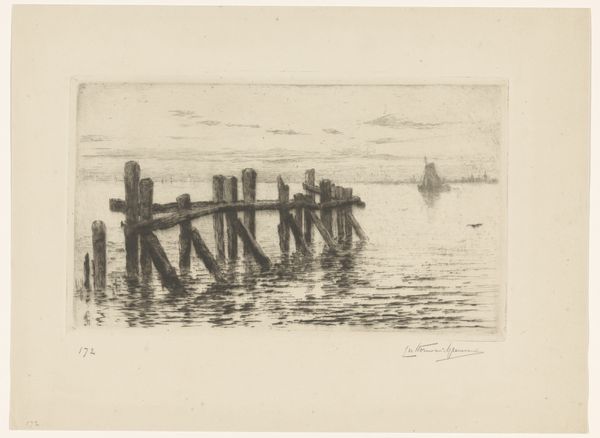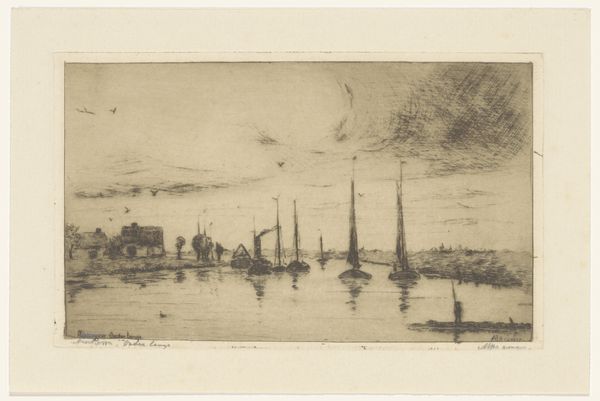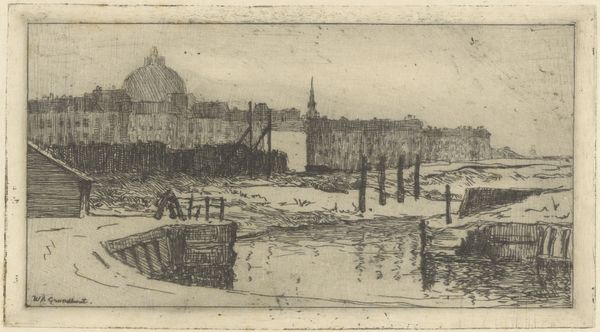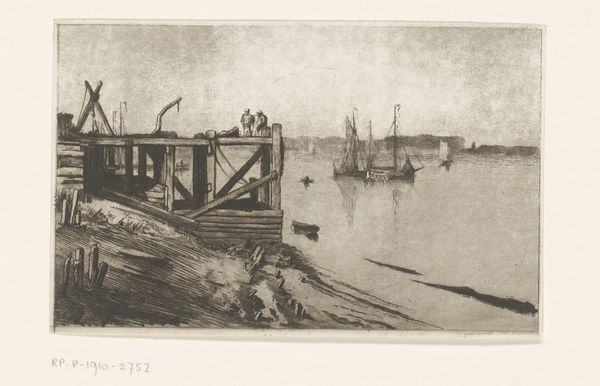
print, etching
# print
#
etching
#
landscape
#
cityscape
#
realism
Dimensions: height 151 mm, width 260 mm
Copyright: Rijks Museum: Open Domain
Curator: Here we have Carel Nicolaas Storm van 's-Gravesande's "Haven van Yerseke," or "Harbor of Yerseke," an etching dating from around 1884 to 1889. Editor: It's a very subdued composition. There’s a delicate, almost ghostly quality to the light. The texture created by the etching really captures the feel of a blustery, grey day at the docks. Curator: The artist's expert use of line and shadow contributes to that atmosphere. Note how the vertical lines of the wooden poles and masts seem to reflect both literally in the water, but also metaphorically in the presence of that church steeple on the horizon. Do you sense a subtle power dynamic between the sacred and the secular implied here? Editor: Interesting interpretation! I'm drawn more to the tactile elements, actually. Etching has this quality; the plate itself has to be worked, grounded, bitten by acid. It feels more industrial somehow when you think about what the materials and labor signify about the scene. It makes me wonder, for whom was this made? What kind of access did folks have to Yerseke and art making at this time? Curator: That's a keen insight, thinking about audience and access. I see it as tapping into a broader tradition. The harbour motif connects to Dutch Golden Age seascapes where water and maritime power carried connotations of prosperity, Dutch identity and ambition. Editor: Perhaps, but that industrial feel is present whether he intended it or not. How can we divorce the production from the visual impact? That town wouldn’t exist without an active trade, the production of labor involved, both literally reproduced within this etching and from within this place as depicted by Storm van 's-Gravesande's choice of medium. Curator: Perhaps the value resides precisely in that layered tension. The harbour is both a literal place of labor and commerce and a symbolic space carrying echoes of earlier visual traditions. It's fascinating how the choice of etching, which is often viewed as accessible and reproducible, adds to this sense of tangible history and lived experience, yet transforms familiar landscapes into carriers of new values. Editor: Agreed. A really satisfying example of how a work can be appreciated through both lenses.
Comments
No comments
Be the first to comment and join the conversation on the ultimate creative platform.
